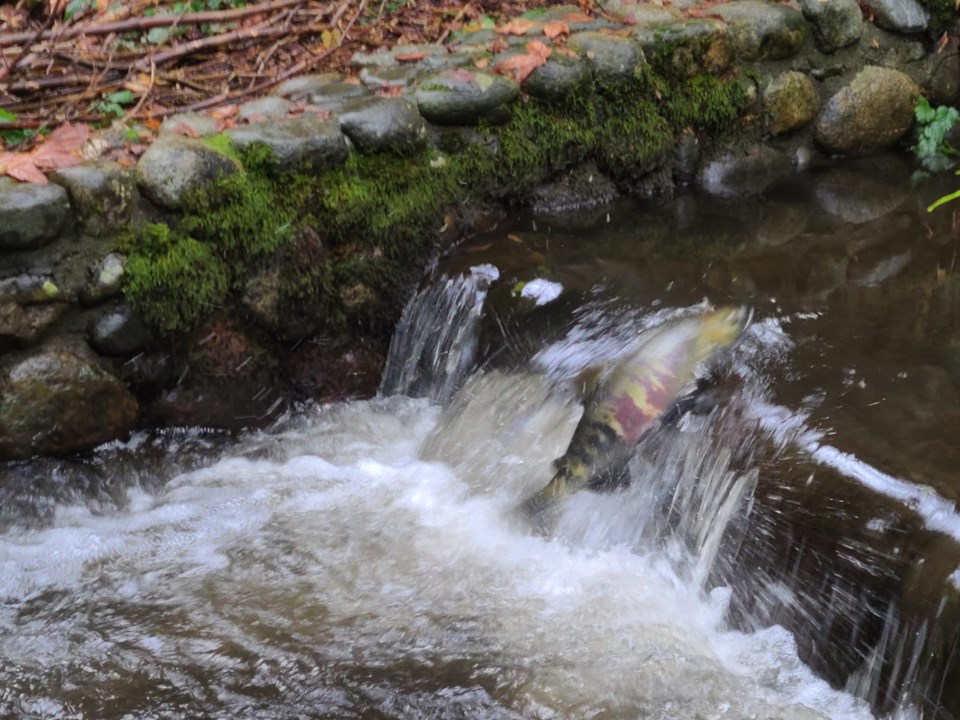Overnight rain brought salmon back to some Tri-City creeks that have been suffering from low water after a lengthy drought.
Volunteers with the Hoy Scott Watershed Society noticed chum salmon making their way upstream to spawn Monday, Oct. 24.
"The overnight and early morning rain accumulation almost immediately triggered the fish returning in to Hoy Creek. Saturday. We viewed many chum and coho at the confluence to Scott awaiting just that — water," said Tyler Storgaard, Hoy Creek hatchery manager.
The non-profit group held a successful Salmon Come Home event on Sunday, and while many people showed up to view salmon displays there were no salmon yet in the creek.
"The event yesterday was the first one in past few years where we had an excellent turnout from the community, volunteers and our partners. While the water was low yesterday and fish not present in Hoy, we did have adult spawners (chum) holding from the Coquitlam that were used in our fish talks," said Storgaard.
Salmon have also returned to Mossom Creek, according to a Tweet Sunday.
They’re back! Chum salmon in Mossom Creek #PortMoody. #ISpySalmon @PSF @bcparksfdn pic.twitter.com/aYyrCzAm49
— Mossom Creek Hatchery (@mossomcreek) October 23, 2022
Here's how to spot salmon spawning in creeks
On its website, the Hoy Scott Watershed Society offers tips on how to spot salmon.
Here are a few:
- Look carefully. Salmon — in particular chum salmon — have similar colours to the rocks or stones in the stream and are therefore naturally camouflaged. Coho are even better at hiding than the chum. If you are expecting to see bright red salmon, you’ve come to the wrong creeks.
- Wearing sunglasses may help. Fishers often wear polarized sunglasses to better spot fish in the water.
- Look for resting places. Salmon have an arduous journey upstream. They can often be spotted under bridges or hanging branches or fallen logs to build up strength for their next climb.
- Have patience. Salmon may be right where you are looking, but they can be very hard to spot. Take lots of time. It’s often best to stay in one spot for some time to observe before moving further up or down the creek to try another area.





